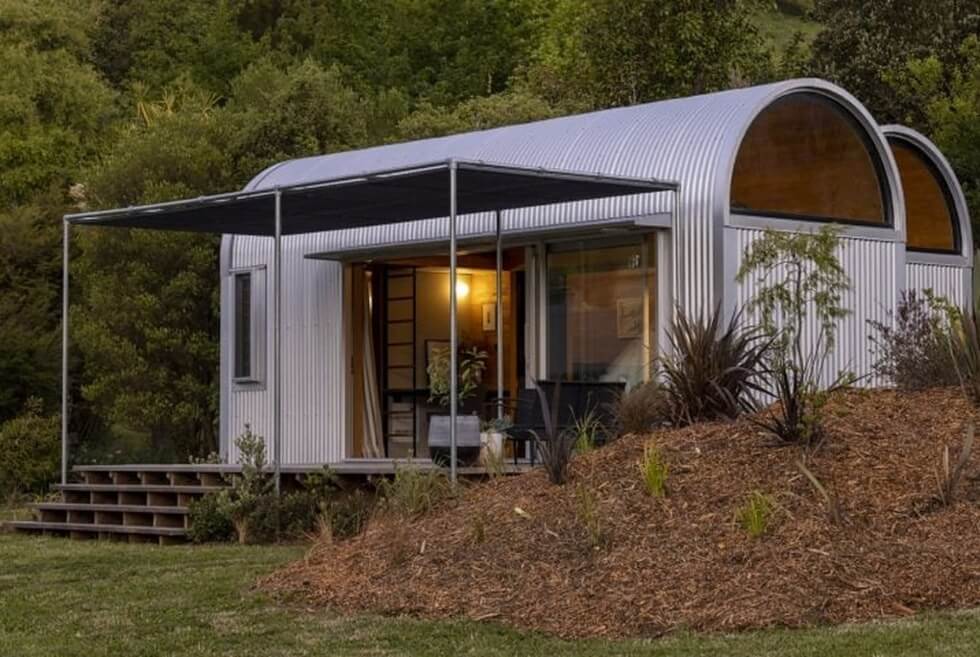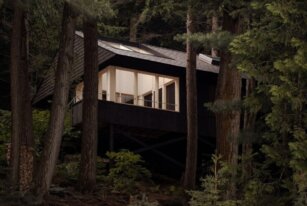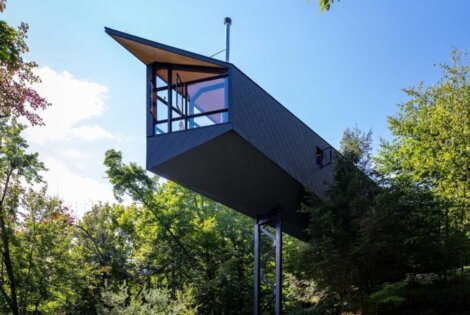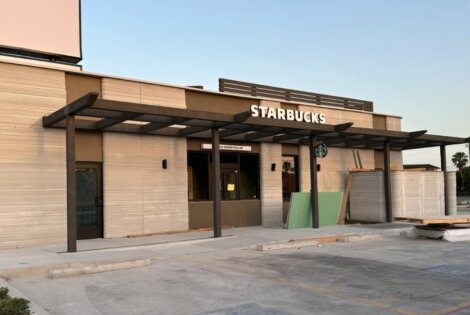Architect William Samuels developed Studio House as a solution to a personal problem in finding affordable homes in New Zealand. With housing in his country at a “crisis point” he opted to build a relocatable house on leased land that can then be expanded in another location should the need arises. For him, leasing land puts the budget focus entirely on the construction of the home instead of mostly into the purchase of land.
For this build, he used corrugated metal-clad modules designed to be easily moved and a couple of timber-framed, barrel vaulted modules put side-by-side and positioned slightly offset to render a 42-square-meter home. One module hosts a kitchenette with a sink and built-in open cupboards, the bathroom, and study. This area of the home opens out to a wooden deck while the other module hosts the living space and bedroom built with a small mezzanine space above.
Samuels aimed for Studio House to feel open and spacious and with a sense of connection to the outdoors. As such, he opted for high, vaulted ceilings with skylights at each end for natural lighting. Meanwhile, the exteriors feature large, sliding glass doors and cladding in corrugated zincalume panels. Inside, wooden planks line the ceilings and walls.
Samuels said the barrel vaulted form added “extra height and volume within the space” to Studio House. It also created “interesting spatial qualities along with a feeling of warmth and comfort internally which helps create a space that feels like ‘home'”. Another reason for using the modules is relocation. They can easily be separated and lifted off its foundation then individually transported. Using modules also makes it feasible to expand the spaces when needed, say an extra bedroom for a family of three or four.
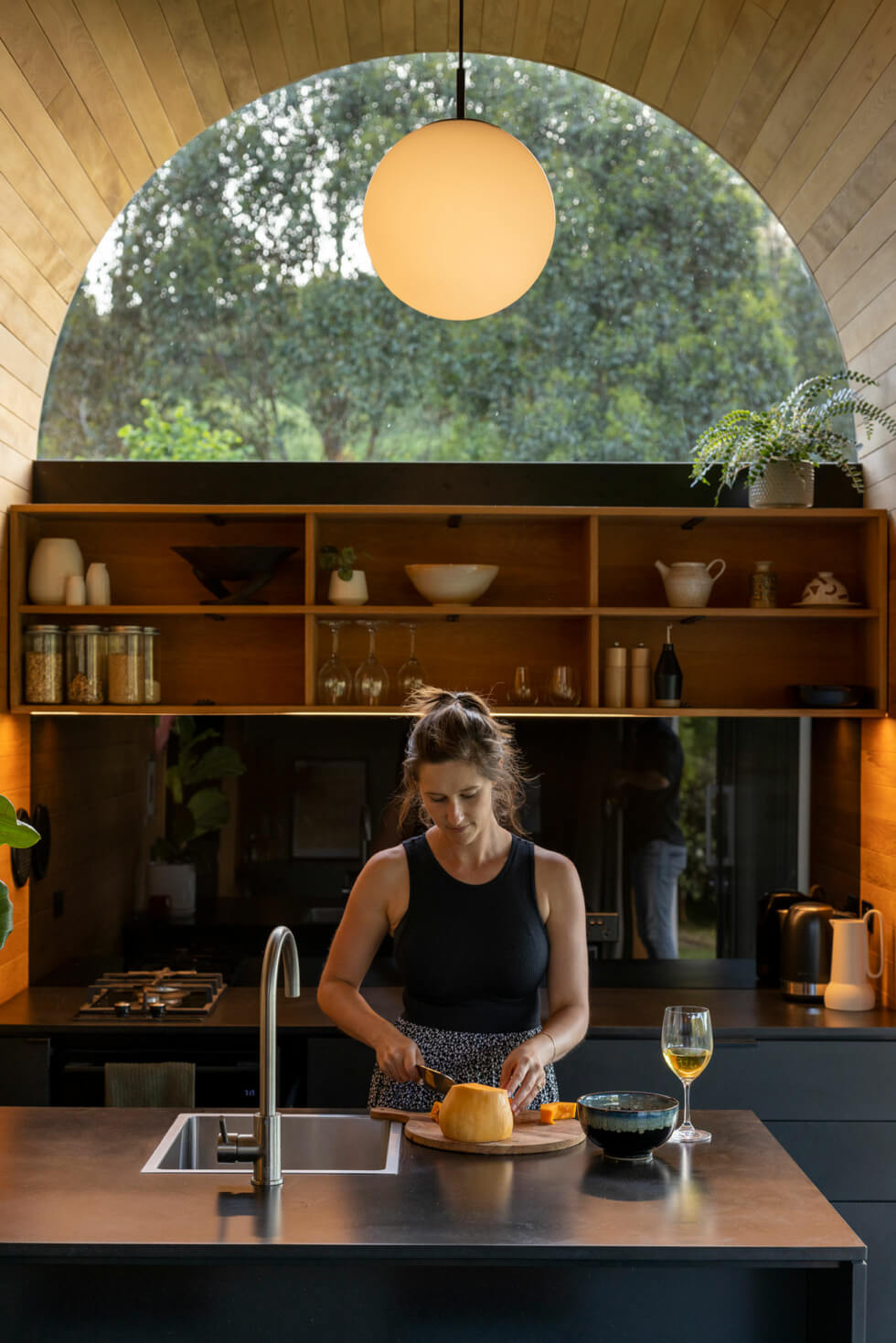

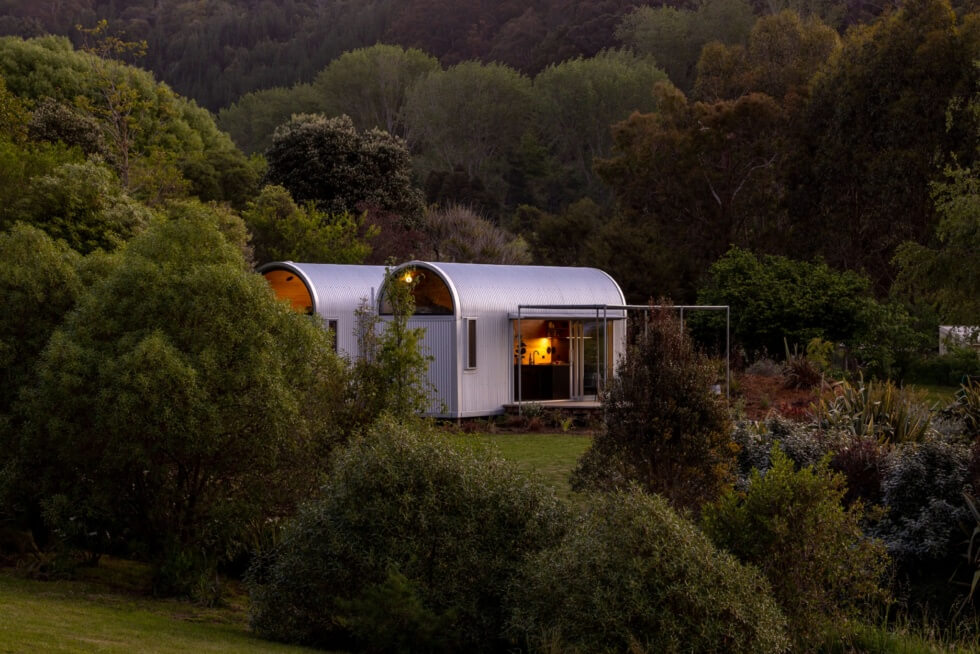
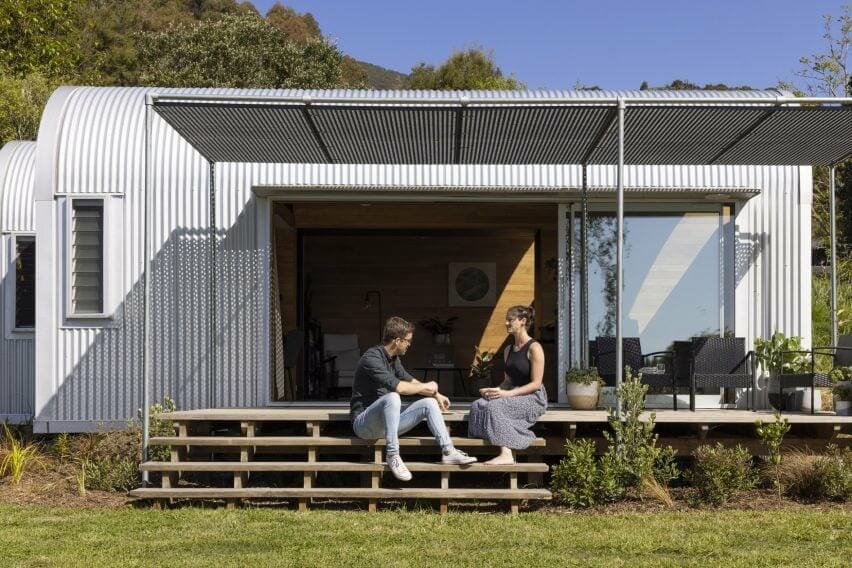
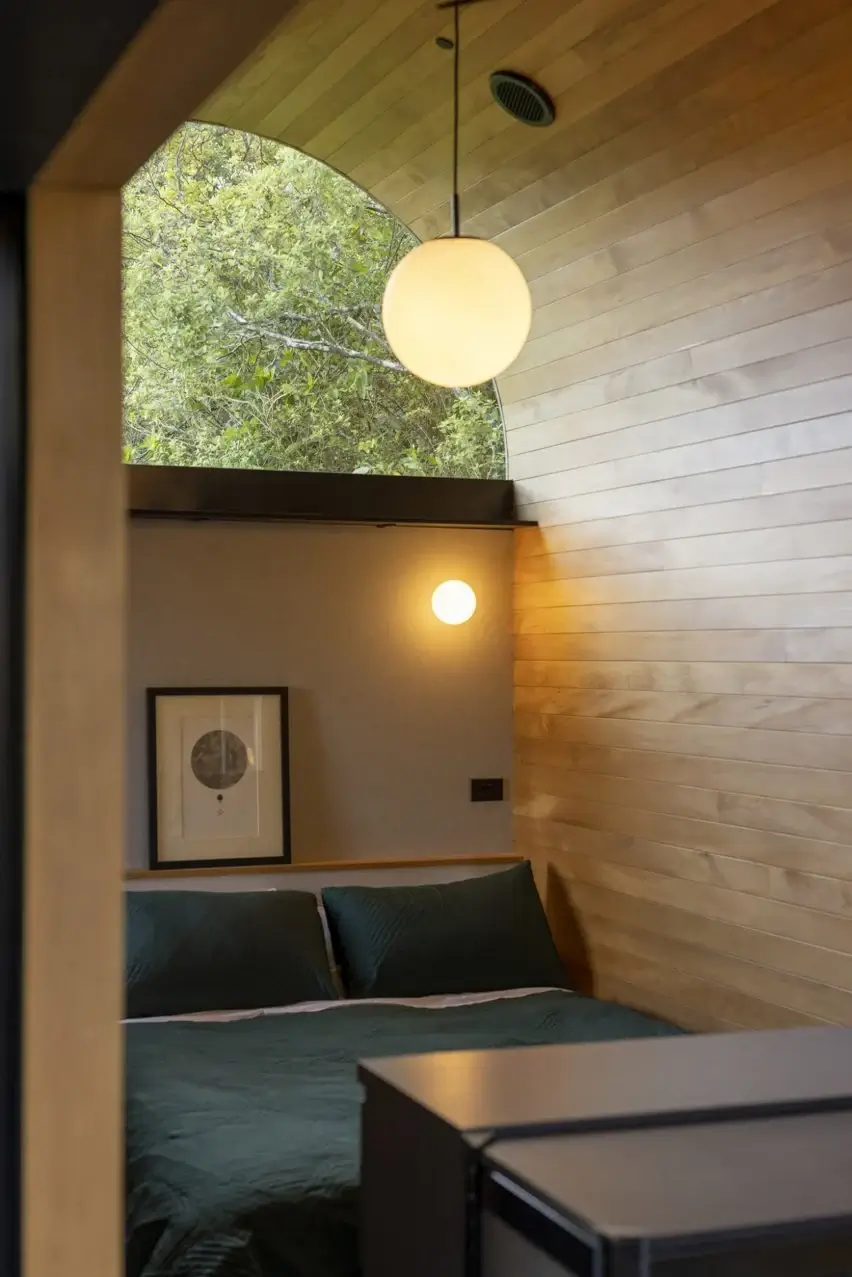
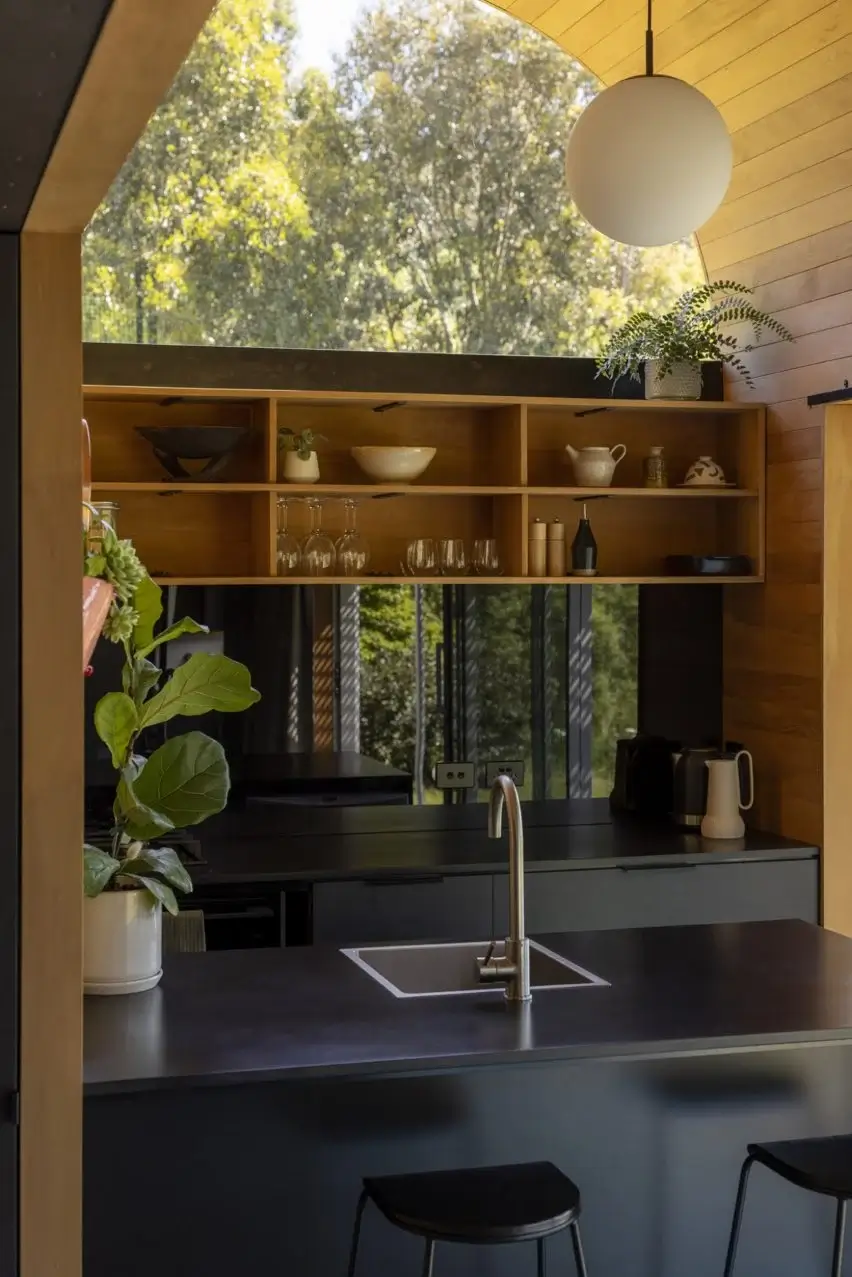
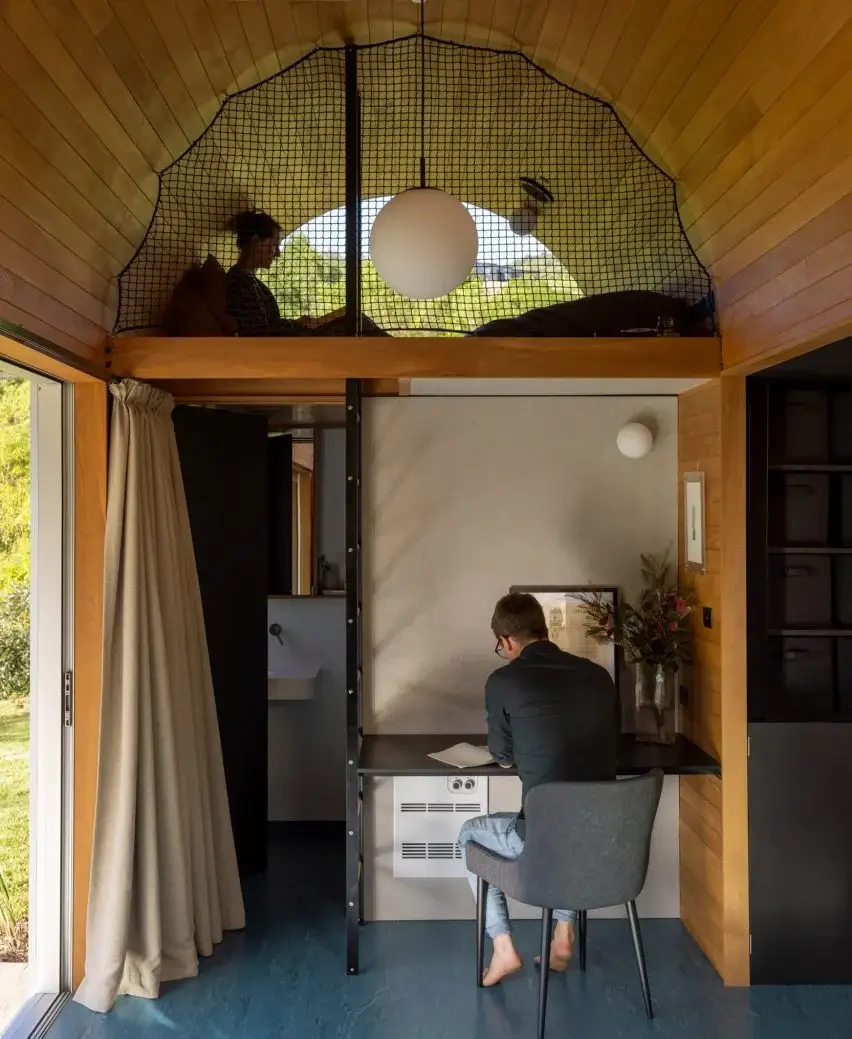
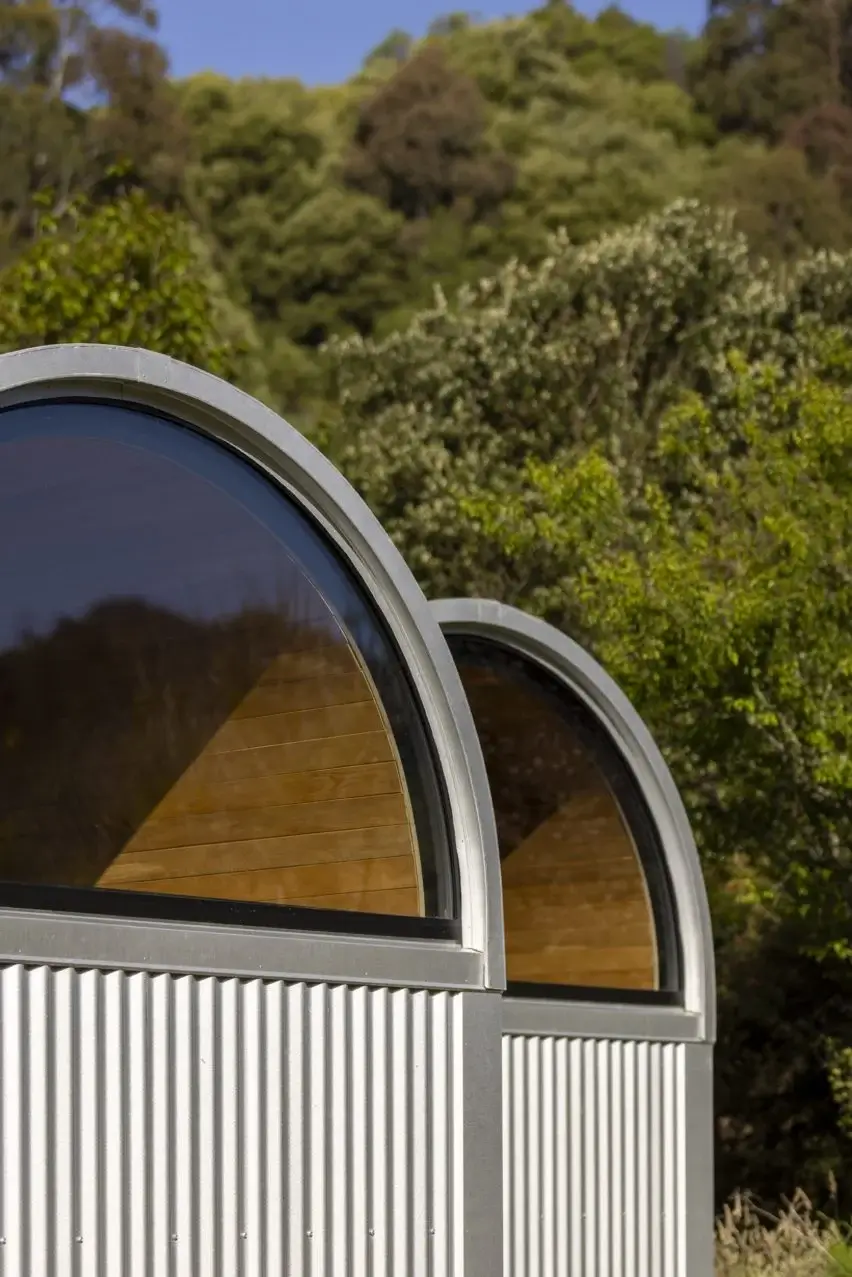

Images courtesy of William Samuels Architects

